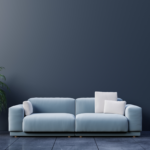Introduction
E-commerce is evolving rapidly, and Shopify has emerged as one of the leading platforms for online businesses. With millions of merchants using Shopify, the demand for personalized and interactive shopping experiences has never been higher.
One of the most powerful tools to enhance user engagement and drive sales is a product configurator. Shopify product configurators allow customers to personalize products in real-time, offering an interactive shopping experience that increases conversions and reduces returns. This article explores everything you need to know about Shopify product configurators, from their benefits and types to implementation and future trends.
1. What is a Shopify Product Configurator?
A Shopify product configurator is a tool that enables customers to customize products directly on a Shopify store. Instead of selecting from pre-defined options, shoppers can modify colors, materials, sizes, engravings, or even complex design elements in real time.
Differences Between Basic Product Options and Advanced Configurators
- Basic options: Limited choices such as color and size selection.
- Advanced configurators: Interactive tools offering 3D previews, dynamic pricing, and real-time updates.
Industries That Benefit from Shopify Product Configurators
- Furniture and home decor
- Apparel and fashion
- Electronics and gadgets
- Automotive accessories
- Custom promotional products
2. Benefits of Using a Product Configurator on Shopify
Increased Customer Engagement
Interactive tools keep users engaged longer, improving the likelihood of completing a purchase.
Higher Conversion Rates & Lower Cart Abandonment
When customers can see their customized product in real-time, they feel more confident, leading to higher conversion rates.
Reduced Return Rates
Accurate visualization minimizes order mistakes, reducing costly returns and customer dissatisfaction.
Enhanced Personalization & Customer Satisfaction
Customers appreciate having control over their product’s look and feel, leading to better shopping experiences.
3. How Shopify Product Configurators Work
Real-Time Product Customization
Users can modify products using visual interfaces, and updates are reflected instantly.
Shopify Backend Integration
Configurators integrate with Shopify’s inventory, pricing, and checkout systems, ensuring seamless order processing.
Mobile & Multi-Device Compatibility
Modern configurators work across all devices, ensuring a consistent shopping experience.
4. Types of Product Configurators for Shopify
2D Configurators
Customers can change colors, add text, or upload logos, ideal for apparel and promotional items.
3D Configurators
Full 360-degree interactive product previews, often used in furniture and automotive industries.
Augmented Reality (AR) Configurators
AR lets customers visualize products in their real environment, boosting confidence in purchases.
5. Best Industries for Shopify Product Configurators
- Furniture & Home Decor – Custom sofas, tables, and chairs.
- Fashion & Apparel – Custom t-shirts, shoes, and jewelry.
- Electronics & Gadgets – Custom-built PCs and phone cases.
- Automotive Accessories – Personalized car interiors and wheels.
- Printing & Promotional Products – Business cards, mugs, and custom gifts.
6. Top Features to Look for in a Shopify Product Configurator
- User-friendly UI/UX
- High-quality 3D rendering
- Dynamic pricing calculation
- Mobile responsiveness
- API and third-party integrations
- Augmented Reality (AR) support
7. Best Shopify Apps for Product Configuration
Here are some of the best apps available on Shopify for product customization:
- Product Options by Bold – Custom product options and price adjustments.
- Zakeke – Advanced 3D and AR-based configurator.
- Kickflip – 3D customization for fashion and apparel.
- Live Product Options – User-friendly customization tool for multiple industries.
8. SEO and Digital Marketing Benefits of Shopify Product Configurators
Increased Dwell Time
Google rewards sites that keep users engaged longer, boosting SEO rankings.
Interactive Content Boosts Search Rankings
Engaging configurators improve user experience and increase site authority.
Social Media & User-Generated Content
Customers love sharing personalized products, leading to organic marketing and viral reach.
9. Case Studies: Successful Shopify Stores Using Product Configurators
- Nike By You – Custom shoes increase customer engagement.
- Made.com – Interactive furniture configurator boosts sales.
- MVMT Watches – Personalized watches improve conversion rates.
10. How to Set Up a Product Configurator on Shopify
Step 1: Choose the Right App
Select a product configurator based on business needs and budget.
Step 2: Integrate with Shopify
Ensure seamless compatibility with Shopify’s backend.
Step 3: Optimize UI/UX
Make the configurator mobile-friendly and intuitive.
Step 4: Test and Launch
Ensure proper functionality before rolling out to customers.
11. Future Trends in Shopify Product Customization
AI-Driven Customization
Artificial Intelligence will suggest product configurations based on user behavior.
Virtual Reality (VR) Shopping
Customers will be able to explore virtual showrooms and customize products in immersive environments.
Blockchain & NFT-Based Ownership
Future configurators may integrate with blockchain to provide digital ownership records for customized products.
Conclusion
Shopify product configurators are transforming e-commerce by offering engaging, personalized shopping experiences. Businesses leveraging configurators enjoy higher conversions, lower return rates, and improved customer satisfaction.
As technology advances, configurators will continue to evolve, making customization an essential feature for Shopify stores. Whether you’re in fashion, furniture, or electronics, a Shopify product configurator can provide a competitive edge in the market.






